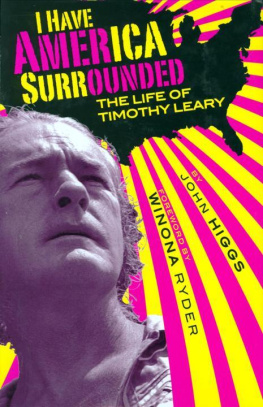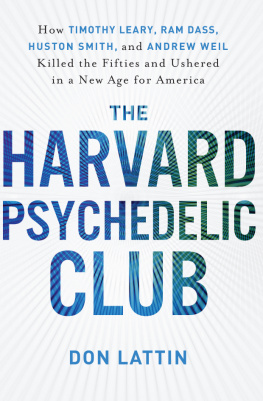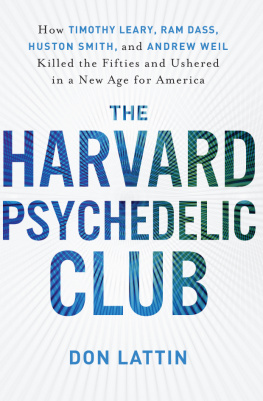Timothy Leary - The Psychedelic Experience: A Manual Based on the Tibetan Book of the Dead
Here you can read online Timothy Leary - The Psychedelic Experience: A Manual Based on the Tibetan Book of the Dead full text of the book (entire story) in english for free. Download pdf and epub, get meaning, cover and reviews about this ebook. year: 2000, publisher: Citadel, genre: Religion. Description of the work, (preface) as well as reviews are available. Best literature library LitArk.com created for fans of good reading and offers a wide selection of genres:
Romance novel
Science fiction
Adventure
Detective
Science
History
Home and family
Prose
Art
Politics
Computer
Non-fiction
Religion
Business
Children
Humor
Choose a favorite category and find really read worthwhile books. Enjoy immersion in the world of imagination, feel the emotions of the characters or learn something new for yourself, make an fascinating discovery.
- Book:The Psychedelic Experience: A Manual Based on the Tibetan Book of the Dead
- Author:
- Publisher:Citadel
- Genre:
- Year:2000
- Rating:5 / 5
- Favourites:Add to favourites
- Your mark:
- 100
- 1
- 2
- 3
- 4
- 5
The Psychedelic Experience: A Manual Based on the Tibetan Book of the Dead: summary, description and annotation
We offer to read an annotation, description, summary or preface (depends on what the author of the book "The Psychedelic Experience: A Manual Based on the Tibetan Book of the Dead" wrote himself). If you haven't found the necessary information about the book — write in the comments, we will try to find it.
The Psychedelic Experience: A Manual Based on the Tibetan Book of the Dead — read online for free the complete book (whole text) full work
Below is the text of the book, divided by pages. System saving the place of the last page read, allows you to conveniently read the book "The Psychedelic Experience: A Manual Based on the Tibetan Book of the Dead" online for free, without having to search again every time where you left off. Put a bookmark, and you can go to the page where you finished reading at any time.
Font size:
Interval:
Bookmark:

General Introduction
General Introduction
A psychedelic experience is a journey to new realms of consciousness. The scope and content of the experience is limitless, but its characteristic features are the transcendence of verbal concepts, of space-time dimensions, and of the ego or identity. Such experiences of enlarged consciousness can occur in a variety of ways: sensory deprivation, yoga exercises, disciplined meditation, religious or aesthetic ecstasies, or spontaneously. Most recently they have become available to anyone through the ingestion of psychedelic drugs such as LSD, psilocybin, mescaline, DMT, etc. [This is the statement of an ideal, not an actual situation, in 1964. The psychedelic drugs are in the United States classified as "experimental" drugs. That is, they are not available on a prescription basis, but only to "qualified investigators." The Federal Food and Drug Administration has defined "qualified investigators" to mean psychiatrists working in a mental hospital setting, whose research is sponsored by either state or federal agencies.]
Of course, the drug dose does not produce the transcendent experience. It merely acts as a chemical key - it opens the mind, frees the nervous system of its ordinary patterns and structures. The nature of the experience depends almost entirely on set and setting. Set denotes the preparation of the individual, including his personality structure and his mood at the time. Setting is physical - the weather, the room's atmosphere; social - feelings of persons present towards one another; and cultural - prevailing views as to what is real. It is for this reason that manuals or guide-books are necessary. Their purpose is to enable a person to understand the new realities of the expanded consciousness, to serve as road maps for new interior territories which modern science has made accessible.
Different explorers draw different maps. Other manuals are to be written based on different models -scientific, aesthetic, therapeutic. The Tibetan model, on which this manual is based, is designed to teach the person to direct and control awareness in such a way as to reach that level of understanding variously called liberation, illumination, or enlightenment. If the manual is read several times before a session is attempted, and if a trusted person is there to remind and refresh the memory of the voyager during the experience, the consciousness will be freed from the games which comprise "personality" and from positive-negative hallucinations which often accompany states of expanded awareness. The Tibetan Book of the Dead was called in its own language the Bardo Thodol, which means "Liberation by Hearing on the After-Death Plane." The book stresses over and over that the free consciousness has only to hear and remember the teachings in order to be liberated.
The Tibetan Book of the Dead is ostensibly a book describing the experiences to be expected at the moment of death, during an intermediate phase lasting forty-nine (seven times seven) days, and during rebirth into another bodily frame. This however is merely the exoteric framework which the Tibetan Buddhists used to cloak their mystical teachings. The language and symbolism of death rituals of Bonism, the traditional pre-Buddhist Tibetan religion, were skillfully blended with Buddhist conceptions. The esoteric meaning, as it has been interpreted in this manual, is that it is death and rebirth that is described, not of the body. Lama Govinda indicates this clearly in his introduction when he
General Introduction
writes: "It is a book for the living as well as the dying." The book's esoteric meaning is often concealed beneath many layers of symbolism. It was not intended for general reading. It was designed to be understood only by one who was to be initiated personally by a guru into the Buddhist mystical doctrines, into the pre-mortem-death-rebirth experience. These doctrines have been kept a closely guarded secret for many centuries, for fear that naive or careless application would do harm. In translating such an esoteric text, therefore, there are two steps: one, the rendering of the original text into English; and two, the practical interpretation of the text for its uses. In publishing this practical interpretation for use in the psychedelic drug session, we are in a sense breaking with the tradition of secrecy and thus contravening the teachings of the lama-gurus.
However, this step is justified on the grounds that the manual will not be understood by anyone who has not had a consciousness-expanding experience and that there are signs that the lamas themselves, after their recent diaspora, wish to make their teachings available to a wider public.
Following the Tibetan model then, we distinguish three phases of the psychedelic experience. The first period (Chikhai Bardo) is that of complete transcendence - beyond words, beyond space-time, beyond self. There are no visions, no sense of self, no thoughts. There are only pure awareness and ecstatic freedom from all game (and biological) involvements. ["Games" are behavioral sequences defined by roles, rules, rituals, goals, strategies, values, language, characteristic space-time locations and characteristic patterns of movement. Any behavior not having these nine features is non-game: this includes physiological reflexes, spontaneous play, and transcendent awareness.] The second lengthy period involves self, or external game reality (Chonyid Bardo) - in sharp exquisite clarity or in the form of hallucinations (karmic apparitions). The final period (Sidpa Bardo) involves the return to routine game reality and the self. For most persons the second (aesthetic or hallucinatory) stage is the longest. For the initiated the first stage of illumination lasts longer. For the unprepared, the heavy game players, those who anxiously cling to their egos, and for those who take the drug in a non-supportive setting, the struggle to regain reality begins early and usually lasts to the end of their session.
Words like these are static, whereas the psychedelic experience is fluid and ever-changing. Typically the subject's consciousness flicks in and out of these three levels with rapid oscillations. One purpose of this manual is to enable the person to regain the transcendence of the First Bardo and to avoid prolonged entrapments in hallucinatory or ego-dominated game patterns.
The Basic Trusts and Beliefs. You must be ready to accept the possibility that there is a limitless range of awareness for which we now have no words; that awareness can expand beyond range of your ego, your self, your familiar identity, beyond everything you have learned, beyond your notions of space and time, beyond the differences which usually separate people from each other and from the world around them.
You must remember that throughout human history, millions have made this voyage. A few (whom we call mystics, saints or buddhas) have made this experience endure and have communicated it to their fellow men. You must remember, too, that the experience is safe (at the very worst, you will end up the
General Introduction
same person who entered the experience), and that all of the dangers which you have feared are unnecessary productions of your mind. Whether you experience heaven or hell, remember that it is your mind which creates them. Avoid grasping the one or fleeing the other. Avoid imposing the ego game on the experience.
You must try to maintain faith and trust in the potentiality of your own brain and the billion-year-old life process. With you ego left behind you, the brain can't go wrong.
Try to keep the memory of a trusted friend or a respected person whose name can serve as a guide and protection.
Trust your divinity, trust your brain, trust your companions. Whenever in doubt, turn off your mind, relax, float downstream.
Font size:
Interval:
Bookmark:
Similar books «The Psychedelic Experience: A Manual Based on the Tibetan Book of the Dead»
Look at similar books to The Psychedelic Experience: A Manual Based on the Tibetan Book of the Dead. We have selected literature similar in name and meaning in the hope of providing readers with more options to find new, interesting, not yet read works.
Discussion, reviews of the book The Psychedelic Experience: A Manual Based on the Tibetan Book of the Dead and just readers' own opinions. Leave your comments, write what you think about the work, its meaning or the main characters. Specify what exactly you liked and what you didn't like, and why you think so.

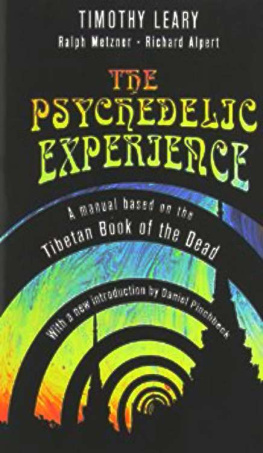
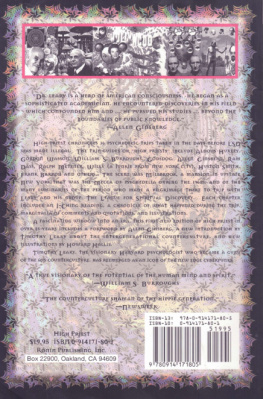

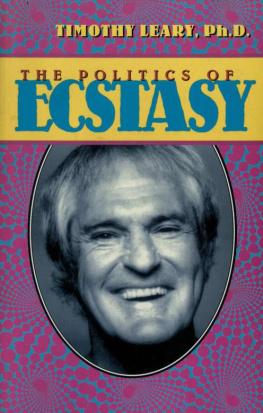
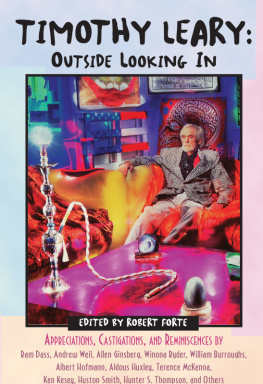

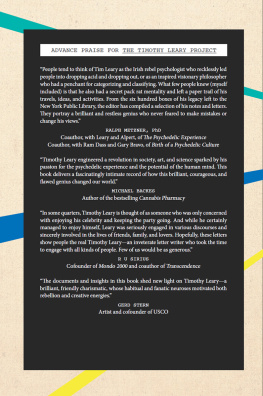
![Robert Greenfield - Timothy Leary: A Biography [excerpts]](/uploads/posts/book/113331/thumbs/robert-greenfield-timothy-leary-a-biography.jpg)
